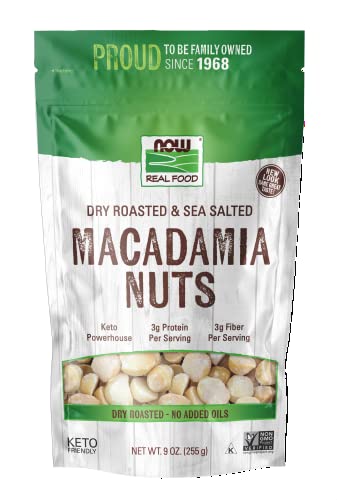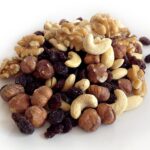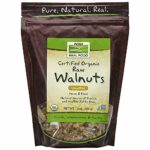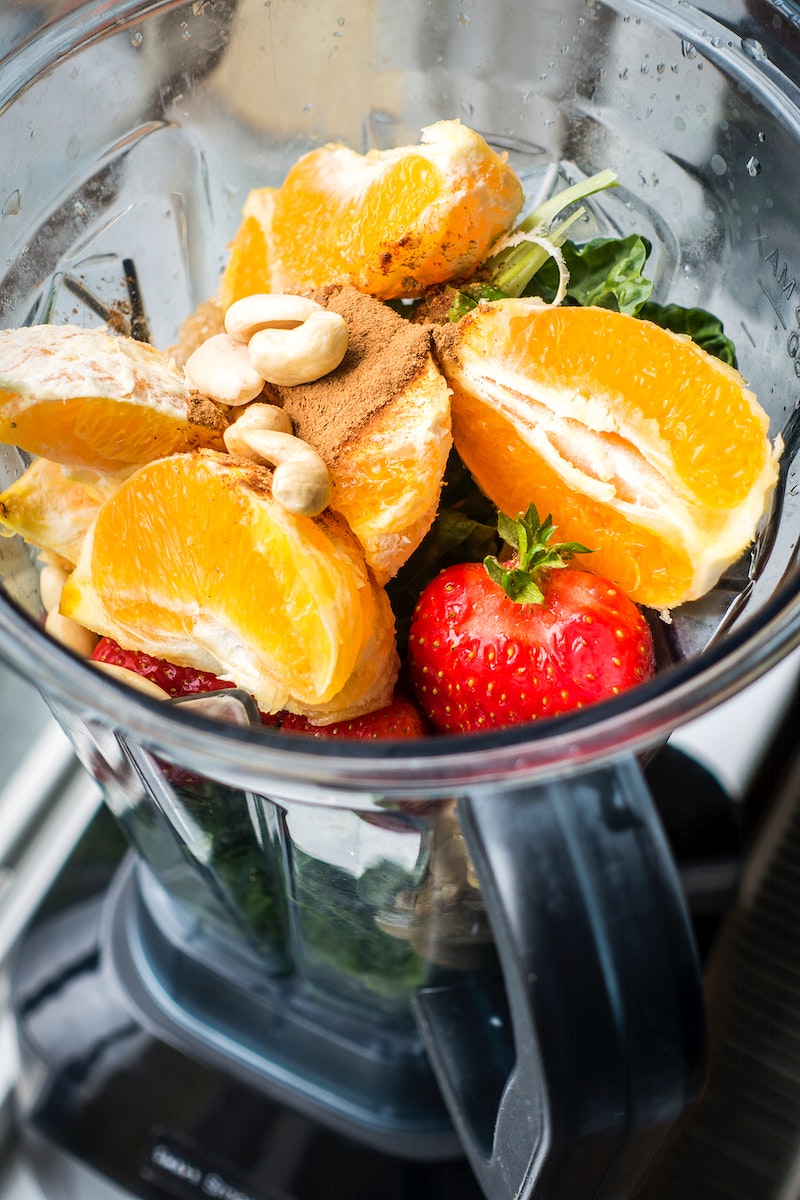Macadamia Nuts – Which is Better Nutrition Raw Or Dry Roasted?
Eating both raw and roasted macadamia nuts provides a burst of goodness, however, they have different nutritional profiles and health benefits.
Raw macadamia nuts are a good source of healthy fats, including monounsaturated and polyunsaturated fats, which can help improve heart health and reduce inflammation. They also contain fiber, protein, and important micronutrients such as magnesium, potassium, and vitamin B1 (thiamin). Some studies have suggested that consuming raw nuts can be beneficial for weight management, as they can help increase feelings of fullness and reduce calorie intake.
Dry roasted macadamia nuts have a slightly different nutrient profile due to the roasting process. While roasting can cause some loss of heat-sensitive nutrients, such as vitamin C, it can also increase the bioavailability of certain minerals, including iron and zinc. Roasting can also enhance the flavor and texture of the nuts, which may make them more appealing to some individuals.
However, it is important to note that dry roasted nuts can sometimes contain added salt or other flavorings, which can increase their sodium or calorie content. Excessive sodium intake can contribute to high blood pressure and other health problems, so it is important to choose roasted nuts that are low in salt or opt for raw nuts if salt intake is a concern.
In summary, both raw and dry roasted macadamia nuts can be nutritious, and the optimal choice may depend on individual preferences and dietary needs. Raw nuts can provide a good source of healthy fats and micronutrients, while dry roasted nuts may offer increased mineral bioavailability and improved taste and texture.
| Nutrient (per 1 ounce, or 28 grams) | Raw Macadamia Nuts | Dry Roasted Macadamia Nuts |
|---|---|---|
| Calories | 204 | 203 |
| Fat | 23 g | 22 g |
| Saturated fat | 3.4 g | 3 g |
| Carbohydrates | 4 g | 4 g |
| Fiber | 2.4 g | 2.4 g |
| Protein | 2.2 g | 2.2 g |
| Magnesium | 33 mg | 37 mg |
| Potassium | 103 mg | 104 mg |
| Vitamin B1 (Thiamin) | 0.3 mg | 0.2 mg |
| Iron | 0.7 mg | 1.3 mg |
| Zinc | 0.6 mg | 0.9 mg |
Note that these values are approximate and may vary depending on the specific type of macadamia nuts and the roasting method used. Raw macadamia nuts may offer slightly more thiamin, while dry roasted nuts may provide slightly more iron and zinc. Both forms of macadamia nuts can be a good source of healthy fats, fiber, and other important nutrients. When choosing dry roasted nuts, it is important to check the label for added salt or other flavorings, which can increase their sodium or calorie content.
Note that these values are approximate and may vary depending on the specific type of macadamia nuts and the roasting method used. Raw macadamia nuts may offer slightly more thiamin, while dry roasted nuts may provide slightly more iron and zinc. Both forms of macadamia nuts can be a good source of healthy fats, fiber, and other important nutrients. When choosing dry roasted nuts, it is important to check the label for added salt or other flavorings, which can increase their sodium or calorie content.
Macadamia nuts are packed with essential nutrients that can benefit your health. These include protein, fat, vitamins and minerals.
They contain plenty of beneficial monounsaturated fats, which have been linked to a lower risk of heart disease and other ailments.
They are also rich in thiamine, an essential nutrient for energy conversion. Ensuring you get this nutrient through food is key for optimal health.
Protein
One ounce of raw macadamia nuts provides an incredible 19 grams of protein! Additionally, they’re an excellent source of magnesium and vitamin E which aid in hormone regulation as well as increased energy levels. Furthermore, these nuts also contain omega-3 fatty acids which have been known to keep your mood balanced.
Another of macadamia nuts’ advantages is that it’s a healthy and low-calorie snack you can enjoy anytime. Furthermore, they contain high amounts of fiber and protein which may help to keep you full for longer, helping prevent overeating.
They’re also an excellent source of monounsaturated fats, which may lower cholesterol levels and protect the heart. Furthermore, they contain powerful antioxidants which reduce inflammation and fight signs of aging.
According to Healthline, Macadamia nuts also contain essential vitamins and minerals like iron, calcium, and potassium that promote good health by protecting against chronic illnesses like cancer and heart disease. These essential nutrients may help you combat stress on a daily basis as well as support chronic illnesses like cancer or cardiovascular issues.
These healthy, natural ingredients make an excellent addition to any diet plan. Use them as a topping on salads and desserts or try them as croutons in a bowl of oatmeal.
Consume these nuts raw for optimal flavor and nutrition, though you can also find them dry-roasted or oil-roasted. Dry-roasted nuts may be suitable for those wishing to reduce their saturated fat intake.
Roasting can do significant damage to the quality of nuts, so it’s essential that you select them with care. To achieve the best results, buy nuts that have been properly roasted without any additives or extra oils added during preparation.
Fat
Macadamia nuts are an excellent source of fat and contain many other essential nutrients to promote good health and beauty. Not only that, but these nuts also boast antioxidants which fight free radicals that may lead to various health issues.
One study revealed that people who consumed at least 30g of nuts daily were less likely to develop cardiovascular disease than those who didn’t, due to the heart-healthy monounsaturated fats they provided which can lower cholesterol and keep arteries clear.
Aside from being beneficial for your heart, almonds also aid in weight management and blood sugar regulation. That is because they contain healthy fats which can fill you up and prevent you from snacking on empty calories.
Eating more plant foods, like nuts, can increase your antioxidant levels. This may help protect you against chronic illnesses like cancer. Furthermore, adding plant-based protein into your diet may improve digestion and allow for better absorption of essential minerals for good health.
Thankfully, you don’t need to spend hours roasting macadamia nuts in order to reap their full benefits. A quick roast or light toast will do the trick in no time.
This type of cooking helps preserve the nutritional quality of macadamia nuts. Heat can denature or deactivate beneficial proteins and enzymes necessary for proper body functioning, so it’s essential that they not be denatured or deactivated.
Another way to reap the benefits of macadamia nuts is by adding them to savory dishes, such as salads or soups. You could also incorporate them into desserts like ice cream or smoothies for extra indulgence.
Macadamia nuts make an excellent base for homemade nut butter, and can be added to your daily snacks to help you stay on track with weight-loss goals.
Fiber
Eating fiber-rich foods helps you feel full, and macadamia nuts are no exception. Not only do they contain high amounts of dietary fiber (over 4 grams per ounce), but their low carbohydrates content means there won’t be any sudden spikes in blood sugar levels that might lead to cravings later.
They contain protein and fats which slow the absorption of sugar, creating a feeling of being full for longer. This helps combat the hunger hormone ghrelin.
Furthermore, they provide an excellent source of potassium and magnesium. These minerals help regulate blood pressure while encouraging bone and tooth mineralization.
Macadamia nuts contain healthy fats that not only promote heart health but may also aid weight loss. A 2004 study revealed that women who consumed macadamia nuts, coconut and butter for three weeks lost an average of one pound.
Macadamia nuts are an excellent source of iron, an essential nutrient that can help treat and prevent anemia. Furthermore, they contain flavonoids – antioxidants which reduce inflammation in your body and protect you against chronic illnesses like cancer.
Macadamia nuts are an excellent source of phosphorus, which helps build strong bones and teeth. While these minerals may not be found in large amounts in other foods, macadamia nuts provide plenty of them.
Another health advantage of these nuts is that they can improve your gut microbiome, which plays a significant role in overall wellbeing. They contain soluble fiber that feeds beneficial gut bacteria, helping reduce inflammation and protect against digestive conditions.
Vitamins
Raw macadamia nuts are an abundant source of essential vitamins, minerals, protein, fiber and healthy fats. Furthermore, they’re low in sugar and have a low glycemic index. Furthermore, these nutritious nuts provide calcium, phosphorus, manganese, copper, iron, vitamin B1 (thiamin), selenium zinc magnesium.
They contain omega-9 fatty acids which may reduce the risk of cardiovascular disease and type 2 diabetes. Furthermore, tocotrienols and other antioxidants may help protect against cancer.
Some research has suggested that people who eat more nuts may have a lower risk of developing cancer. Although further investigation is necessary, the nutrients in macadamia nuts could potentially help reduce cancer risks by combatting free radicals.
Macadamia nuts contain dietary fiber which may aid digestion and reduce inflammation in the digestive tract. Furthermore, it aids weight loss, promotes heart health, and regulates blood sugar levels.
Research suggests that including macadamia nuts in your diet may reduce the risk of developing ulcerative colitis. Furthermore, some scientists believe that oleic acid, a monounsaturated fatty acid found in macadamia nuts, helps regulate blood pressure.
This nutrient-rich nut is packed with omega 3 fatty acids, vitamin E and antioxidants that may reduce your risk for heart disease and cancer. Furthermore, they contain a form of vitamin D to aid calcium absorption.
Plant sterols found in nuts can also be beneficial to those with high cholesterol, similar to the sterols found in statins. Thus, nuts provide a source of plant-based sterols that may aid in decreasing levels of LDL (bad) cholesterol.
For a healthier alternative to processed snack foods, try roasting or seasoning macadamia nuts. Be sure to read the label to make sure there are no added sugars or oils in these prepared nuts.
Minerals
Macadamia nuts are packed with essential minerals and vitamins for optimal health, such as iron, calcium, phosphorus, manganese, magnesium, potassium and dietary fibre. These nutrients work together to support your overall wellbeing.
Macadamia nuts contain essential minerals that support bone and teeth health. Phosphorus, calcium and manganese are all necessary for strong bones while magnesium aids in their transport and absorption. Furthermore, a high intake of these nutrients helps keep lipid profiles balanced as well as supporting cardiovascular wellness.
Macadamia nuts contain beneficial polyphenols and antioxidants that can shield your body from dangerous free radicals. These protective agents reduce oxidative stress and inflammation that could otherwise lead to chronic diseases like diabetes or heart disease.
These nuts are packed with thiamine, an essential vitamin for optimal brain functioning. Furthermore, they boast plenty of tocotrienols which may protect your body against cancer and other illnesses.
However, it is essential to roast macadamia nuts correctly in order to retain their nutritional value. Excess oxidation during roasting can cause the nuts to become rancid and lose their flavor.
Therefore, it is essential to determine the ideal temperature and timing when roasting macadamia nuts. Your oven’s capabilities as well as what type of nut you are using will determine this ideal setting.
It is essential to remember that raw macadamia nuts can spoil if stored in an unhygienic environment. The best way to store them is in a cool place away from sunlight or direct heat, such as the refrigerator or pantry. They may also need to be soaked before use to maintain their freshness and flavor.
Ilana has been a vegan for over 10 years. She originally made the switch for health reasons, but soon found herself becoming more and more passionate about the ethical and environmental implications of a vegan lifestyle. Ilana is the author of The Graceful Kitchen, a blog all about veganism. She loves to cook up delicious and nutritious vegan meals, and share her recipes with others who are interested in leading a cruelty-free life. Ilana is also a strong advocate for using whole foods as the foundation of a healthy diet, and believes that going vegan is one of the best ways to achieve this.

















